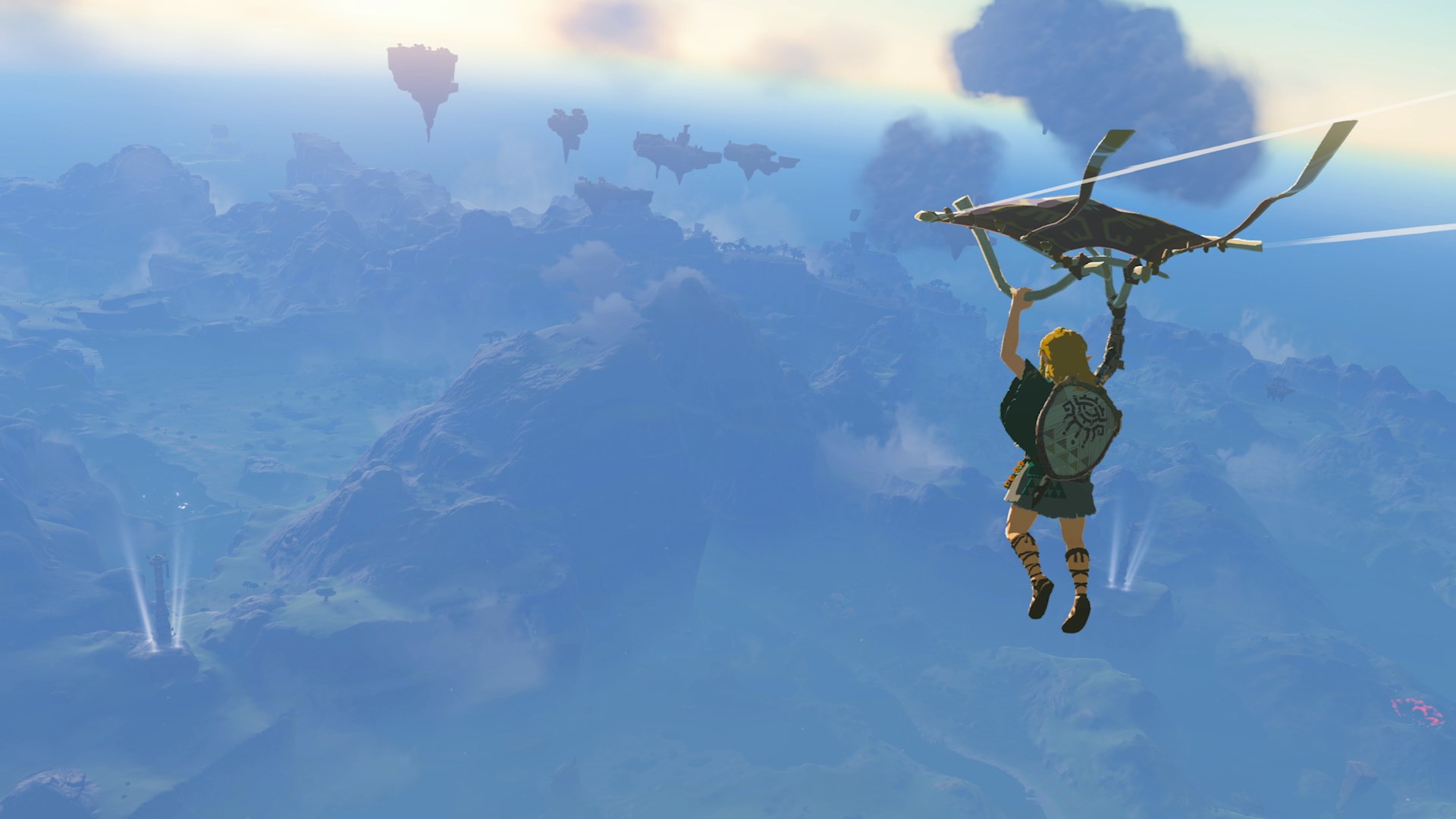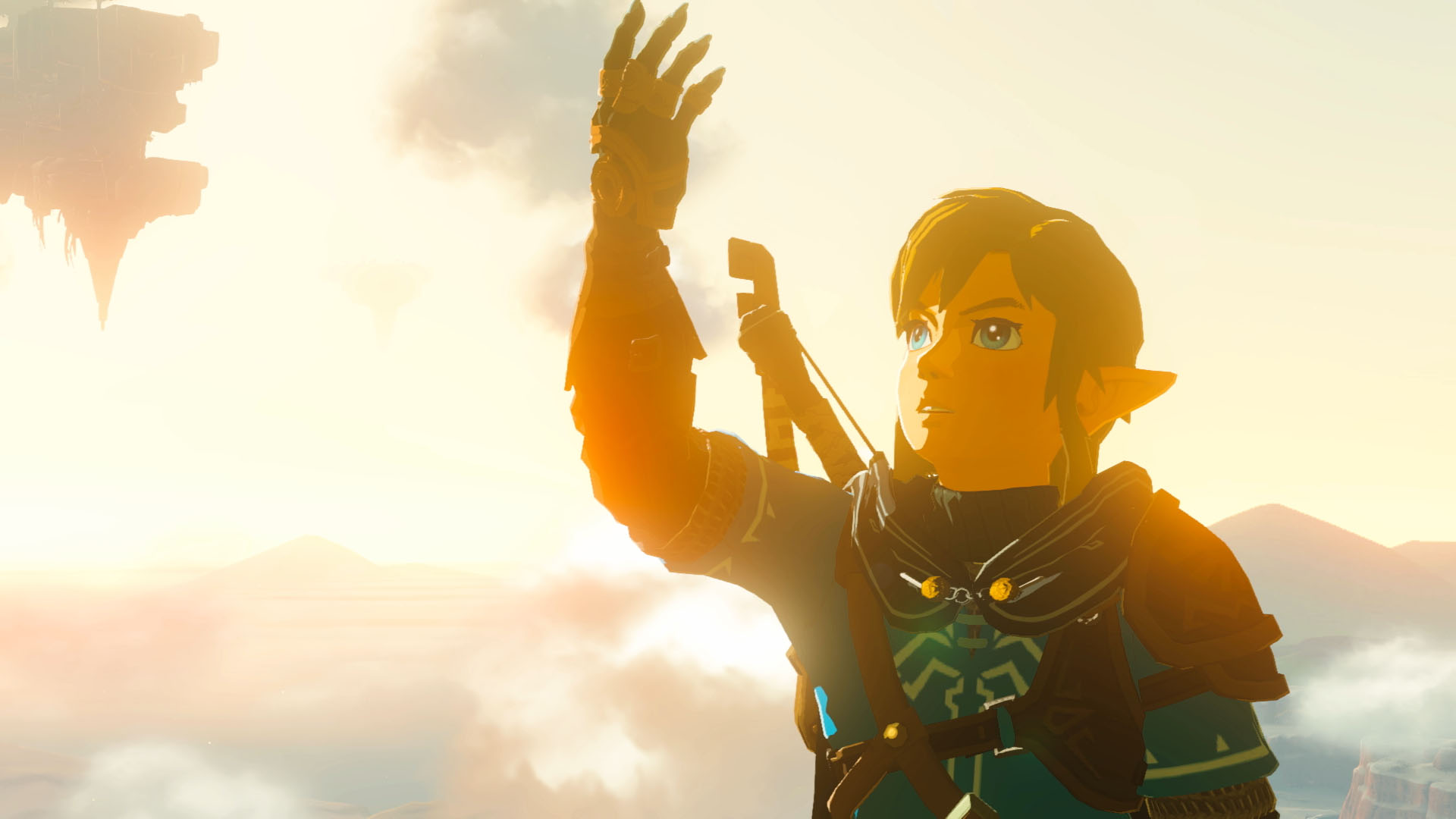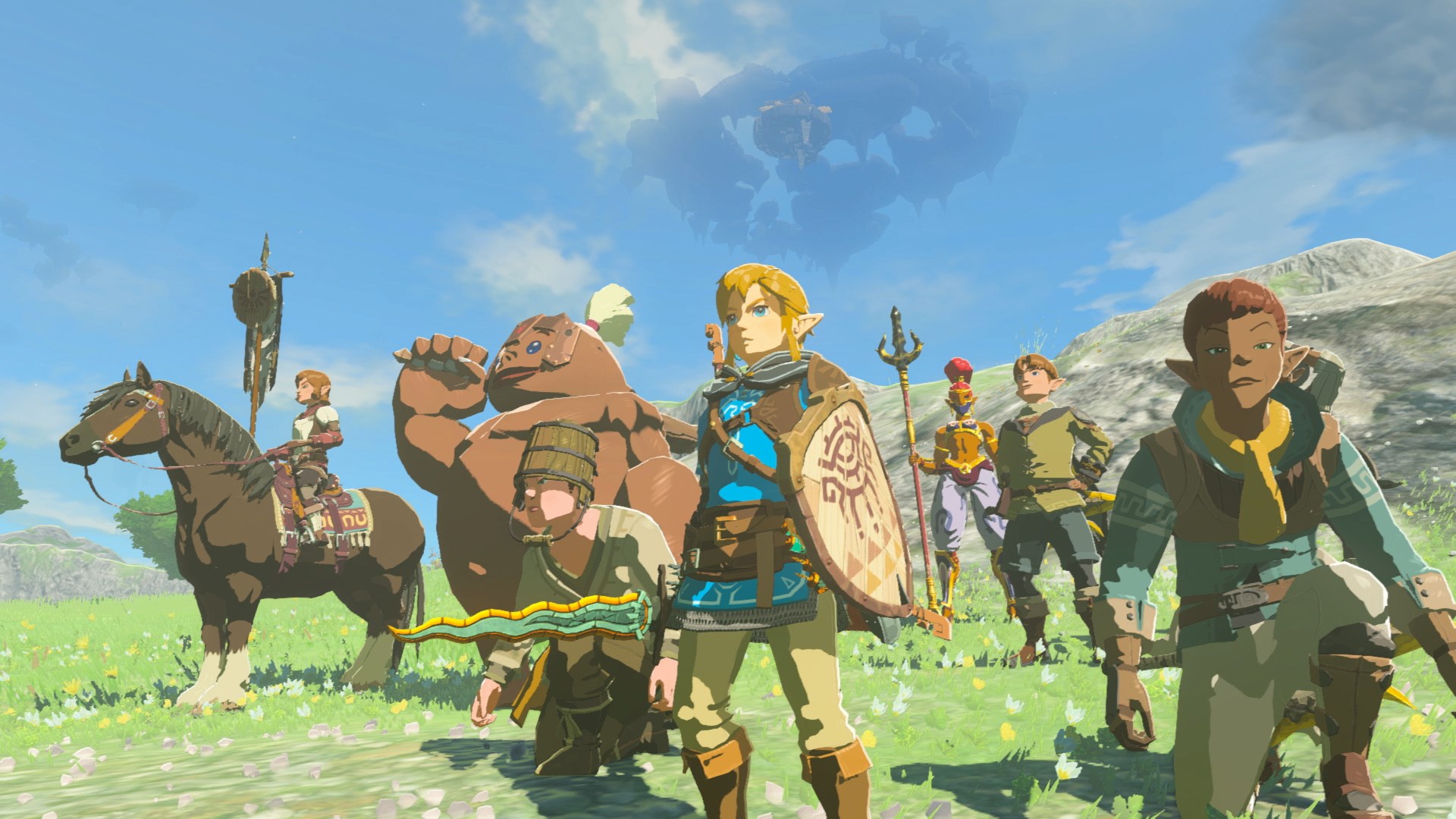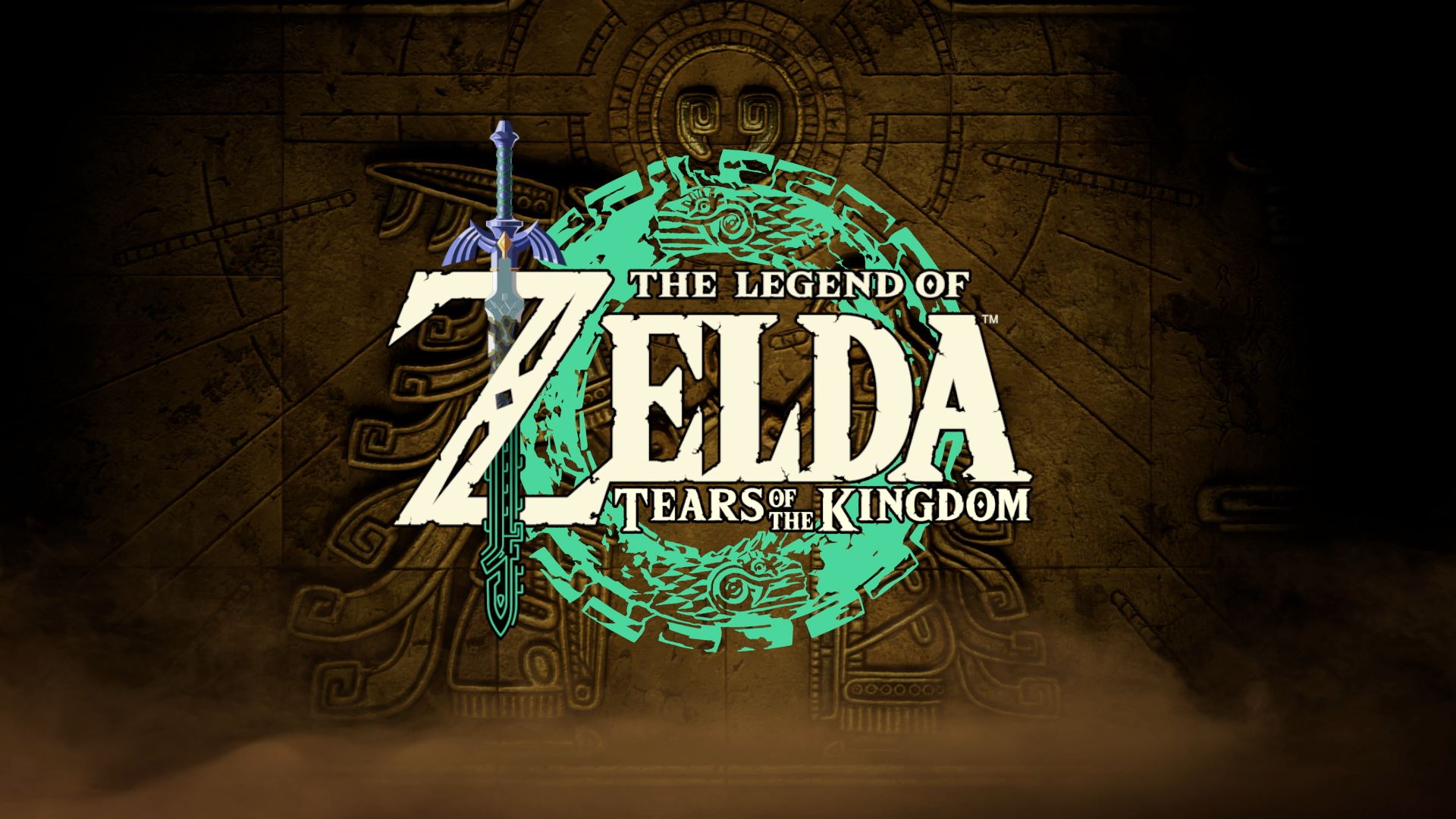Like many of you, I’ve spent the last couple of weeks finding my bearings in The Legend of Zelda: Tears of the Kingdom. At once a textbook LoZ title and its own thing entirely, it’s a bit of a tough nut to crack—even if my early gameplay experience admittedly gave me a leg up on some of its more advanced mechanics.
Since there’s already an overabundance of reviews, walkthroughs, and hot takes available, I decided that, instead of reinventing the wheel, I’d instead focus on some helpful information for parents looking to share the game with their children.
I mean, this is GeekDad; it’s sort of what we do.
That said, here are 10 things any discriminating gamer parent should know about this critically acclaimed commercial juggernaut.
1. You don’t have to have played Breath of the Wild to get into the story.
The Legend of Zelda series isn’t exactly known for its direct sequels. More often than not, each game retells the story of a princess, a champion, and a mighty blade, hitting many of the same notes without overanalyzing how it may’ve been done last time or the time before.
I like that. It really plays up the titular legend, and—just like Cid in the Final Fantasy franchise—it means that you’re often greeted with familiar names and archetypes in only the broadest of strokes.
Tears of the Kingdom, on the other hand, is a capital S sequel. It takes place an indeterminate time after the conclusion of Breath of the Wild in the same world and in the same continuity.
While some familiarity with BotW will certainly be rewarded in the form of recurring characters and locales, it’s not strictly required. You can jump into Hyrule blind and still have a perfectly enjoyable time.
(But, if you somehow missed Breath and are looking for another superb Switch title, by all means, pick up that modern classic as well!)
2. Getting your bearings can take some time.
Tears of the Kingdom does a fine job of integrating things like backstory and gameplay tutorials into the actual narrative of the game, but there are lots of moving parts to wrap one’s head around. There are, for example, tons of martial weapons and various bows and arrows with which to arm oneself, and, yes, these armaments still degrade with use. (There’s actually a pretty cool plot point that explains this, which I really appreciate.)
You can use the Fuse ability to combine and customize your weaponry, Ultrahand to combine environmental assets into complex machines, Ascend to pass through solid platforms above Link, and, eventually, Recall to reverse an object’s movement. Then there are the numerous environments—the many scattered sky islands, the great plains of Hyrule, and a dark and sinister underworld cave system.
Tears doesn’t hold back, even early on, and this can make the game seem a bit daunting. The trick is to not get bogged down in that. Talk to the citizens of Hyrule (and the friendly Zonai concierges in the world above) to discover new missions and then activate one that’s close by in your Adventure Log. Use the map waypoint to navigate to this goal, and if you get turned around, I guarantee you there are tons of walkthroughs and helpful videos to set you back on the right path.
3. The default controls might not be your best option.
Players with smaller hands and those with conditions affecting the fingers may find the default controls in TotK less than ideal. I struggle with osteoarthritis, and while exploring the Rito village portion of the map I quickly found that the necessary dash-jump-paraglide maneuver was giving me a little trouble.

Thankfully, tweaking the default controls is fairly easy. The Options menu available from the game’s System tab—find it by using the + button—will let you take care of several simple modifications. Specifically, here you can swap your Jump (X to B) and dash/action (B to X) functions and toggle off motion aiming. You can also lock the mini-map so that it doesn’t rotate as you move, which I highly suggest even if the rest of the control scheme suits your needs.
For any further customization, you’ll need to proceed to the Switch home menu itself, choose the System Settings cog, then Controllers and Sensors, and then finally Change Button Mapping.
4. It’s easy to miss some of the better upgrades.
Tears of the Kingdom is, in every way, an embarrassment of riches. That’s pretty much my only complaint—if “Hey, this game has too much cool stuff!” can even be called a complaint.
But all this content does make it easy to miss a number of what should rightfully be requisite missions. Available in Lookout Landing, “Camera Work in the Depths” unlocks your Purah Pad’s helpful camera function. This also leads to a second quest, “A Mystery in the Depths,” that gives your Ultrahand ability an amazingly helpful upgrade.
Unfortunately, if you’re an RPG diehard in the habit of talking to every NPC you encounter, you will soon find your Adventure Log populated with numerous Main Quests, Side Adventures, and the like, making it all too easy to overlook important missions like this.
5. Its open world is very, very open.
As I mentioned earlier, between Hyrule, the floating islands, and the murky underground, Link has lots of ground to cover. Literally.
Add to this shrines, Skyview Towers (used Assassin’s Creed-style to map your surroundings), and temples, and you’re looking at a load of real estate. For better or worse, Tears‘ Ultrahand makes reaching many of these disparate climes possible even early in the game.
Of course, this also means that it’s entirely possible to find yourself facing enemies and environmental puzzles you’re not yet prepared to reckon with. Should you find yourself outclassed, simply refer to the map and look for any of those helpful blue glyphs. These represent fast-travel points (usually near unlocked towers and shrines) that allow you to warp back to safety.
6. This game’s cast of characters—both new and returning—is likely a series best.
The Legend of Zelda series runs the gamut from some of gaming’s most endearing characters (Midna, the King of Red Lions) to the ones you love to hate (I still despise you, Groose!) to… whatever the hell Tingle is. And it does so consistently, even with minimal voice acting. Tears of the Kingdom not only follows suit, it excels!
Obviously, Zelda (again voiced by Patricia Summersett) is back to power this adventurous narrative forward, as are a number of other Breath of the Wild heavy-hitters and their kin, but it’s Sheikah scientist Purah that fans have fallen in love with. Though, if I’m being honest, it’s the return of the Yiga Clan that’s been my most pleasant surprise.
There are some fantastic new characters too, not the least of which is Rauru—a name that longtime fans will doubtlessly recognize. His appearance and his role in Tears of the Kingdom, however, are much different than previous iterations, and, in addition to being the conduit through which Link receives most of his new powers, his role in fleshing out the role of the Zonai people in Hyrule’s history is truly fascinating.
7. Like Metroid Dread before it, Tears of the Kingdom isn’t afraid to inject a little horror into the action.
The Legend of Zelda has always had its spookier moments. I mean, Skulltulas are basically nightmare fuel, and the screams of the ReDeads still haunt an entire generation. Tears, though, kicks things up a notch. The introduction of the ghastly mummy under Hyrule castle and Link’s acquisition of his creepy new right arm (talon-like nails and all) start the game off with a bang, but that’s not the end of TotK‘s grisly delights.

While there aren’t any nigh-undefeatable Guardians prowling Hyrule this time, Tears has no shortage of other massive, monstrous foes. The first time I encountered the dreaded Gloom Spawn—terrifying red hands that emerge from the fetid gloom that now plagues the land—I literally shrieked. Not unlike a ReDead.
8. Constructs disappear if you reload a save.
Constructs, those weirdo devices and wacky vehicles everyone’s so crazy about, are easily one of the coolest things about Tears of the Kingdom, but they are, like all good things, temporary. Keep in mind that if you drive your wooden war machine off the side of a sky island, you can’t just get it back by reloading your last save.
Sure, you may still have all the component parts needed to reconstitute it, but the finished product won’t just be sitting there where you left it.
9. You don’t have to rely solely on the autosave system.
Yes, Tears of the Kingdom has a robust and functional autosave feature. More often than not, it creates a new automatic save when you enter a new area or engage an enemy.
But, if you prefer a more granular approach, you can use a traditional save system as well. It’s accessed using the + button and navigating to the System tab. You can also use this tab to reload a preferred manual save rather than the most recent autosave.
10. It really is as good as everyone says.
Being a blogger at a tech, culture, and parenting site is sort of like being a professional nitpicker. Part of my job is looking at things, especially things I like, and poking holes. You can’t be a critic without being critical, and while we at GeekDad do try to shine a light on the things we dig more often than we sound the klaxon for things we don’t, it’s still a part of the gig.
This is all to say that what you’ve already heard about The Legend of Zelda: Tears of the Kingdom is true. The game is phenomenal, and not just because it’s the newest heir to a beloved series’ legacy.
If Breath of the Wild shifted the paradigm for Zelda, taking the best elements of free-roaming fantasies like The Witcher and Skyrim, then Tears of the Kingdom cements these aspects as a part of the new normal for LoZ. Then, it ups the ante by giving players a little something extra to chew on, an almost Fortnite– or Minecraft-style building mechanic that somehow feels perfectly at home in Hyrule.

Best of all, with its focus on exploration and experimentation, it’s an ideal title for a little summertime family gaming. Whether you’re helping your youngest players solve temple puzzles or having a parallel adventure on your own Nintendo Switch system, I can think of no better video gaming experience for those long summer days when you need to beat the heat with a nice indoor activity.
The Legend of Zelda: Tear of the Kingdom is rated E10+ for fantasy violence and mild suggestive themes. Review and promotional materials provided by Nintendo of America. I refuse to admit how long it took me to catch and tame a horse. Just think of the number of hours. Now double it. Now you’re probably close.




